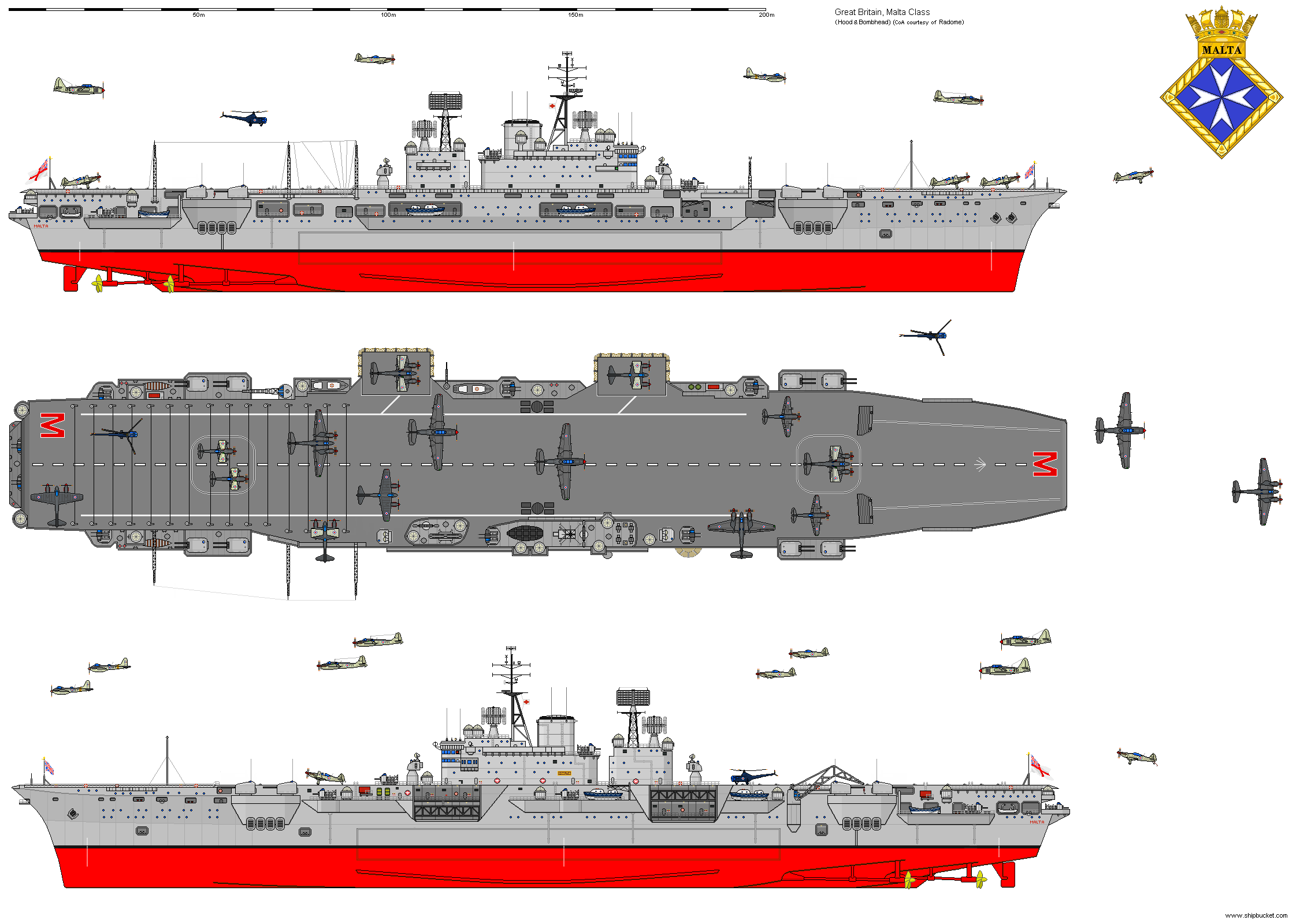
HMS Malta (CV-1945)
Back to Commonwealth Ships List
The Malta class aircraft carriers were the pinnacle of the Royal Navies carrier construction program. They were even bigger than the Australis Endeavour Class ships, and on a par with the US Midway class, but carried less aircraft than both due to the extra armour and armament carried. This is the difference in doctrines between the Pacific based ships and the European theater ships. One lot operated close to enemy land based airpower the other had no such problems. The Malta class were the culmination of all the classes before them, the Illustrious and Audacious types had shown just what they could achieve with the armoured flight decks. With US carriers getting burnt out by kamikaze hits that just bounced off the British carriers armour. The kamikaze threat was the one time when the US Navy may have wished for a bit of deck armour themselves.

Despite being pushed as hard as possible to completion the ships just missed and their first war operations were not till Korea. The aircraft shown are the mid to late 40's types that operated on the Malta class. Trials with the Meteor showed that the bigger carriers could operate jets with no problems.
There were major design departures from previous British carriers, with an open hangar deck, allowing aircraft to warm up their engines before transferring to the flight deck for launch. The 897-by-136-foot (273 by 41 m) flight deck allowed multiple aircraft to launch or land simultaneously, and four aircraft lifts (two on the centereline, and two on the deck edges) aided the rapid movement of aircraft around the flight deck. Sixteen arrestor cables would have been capable of catching landing aircraft up to 20,000 pounds (9,100 kg) in weight, at speeds of up to 75 knots (139 km/h; 86 mph), while the two hydraulic aircraft catapults could launch fully laden aircraft at 130 knots (240 km/h; 150 mph). The armoured flight deck, while seen as a necessity in the context of Japanese kamikaze attacks, was, at 4 inches (100 mm), thinner than other British carriers.Between the hangar spaces and the deck park, the Malta class design would have been capable of carrying up to 80 aircraft.
| Displacement | 49,700 tons std, 60,200 tons full load |
| Length | 916 fett oa |
| Breadth | 115.8 ft hull, |
| Draught | 35 ft |
| Machinery | 4 shaft, geared turbines, 200,000 shp |
| Speed | 32 knots |
| Range | 8200 miles at 20 knots |
| Armour | 4" flight deck, 4" side. 4" magazines |
| Armament | 16 x 4.5" (8x2) 42 x 40mm (7x6) |
| Aircraft | 80 internal, 20-30 deck park |
| Torpedoes | nil |
| Complement | 3450 |
| Notes |
HMS Malta and escort (Fleet Air Arm Museum: by Dvid Hatchard)
.jpg)
| Name | Assigned builder | Completed |
|---|---|---|
| HMS Malta (D93) | John Brown & Company, Clydebank | 21 December 1945 |
| HMS Singapore (D43) | Cammell Laird, Birkenhead | 21 December 1945 |
| HMS Gibraltar (D68) | Vickers-Armstrong, Newcastle-upon-Tyne | 5 November 1945 |